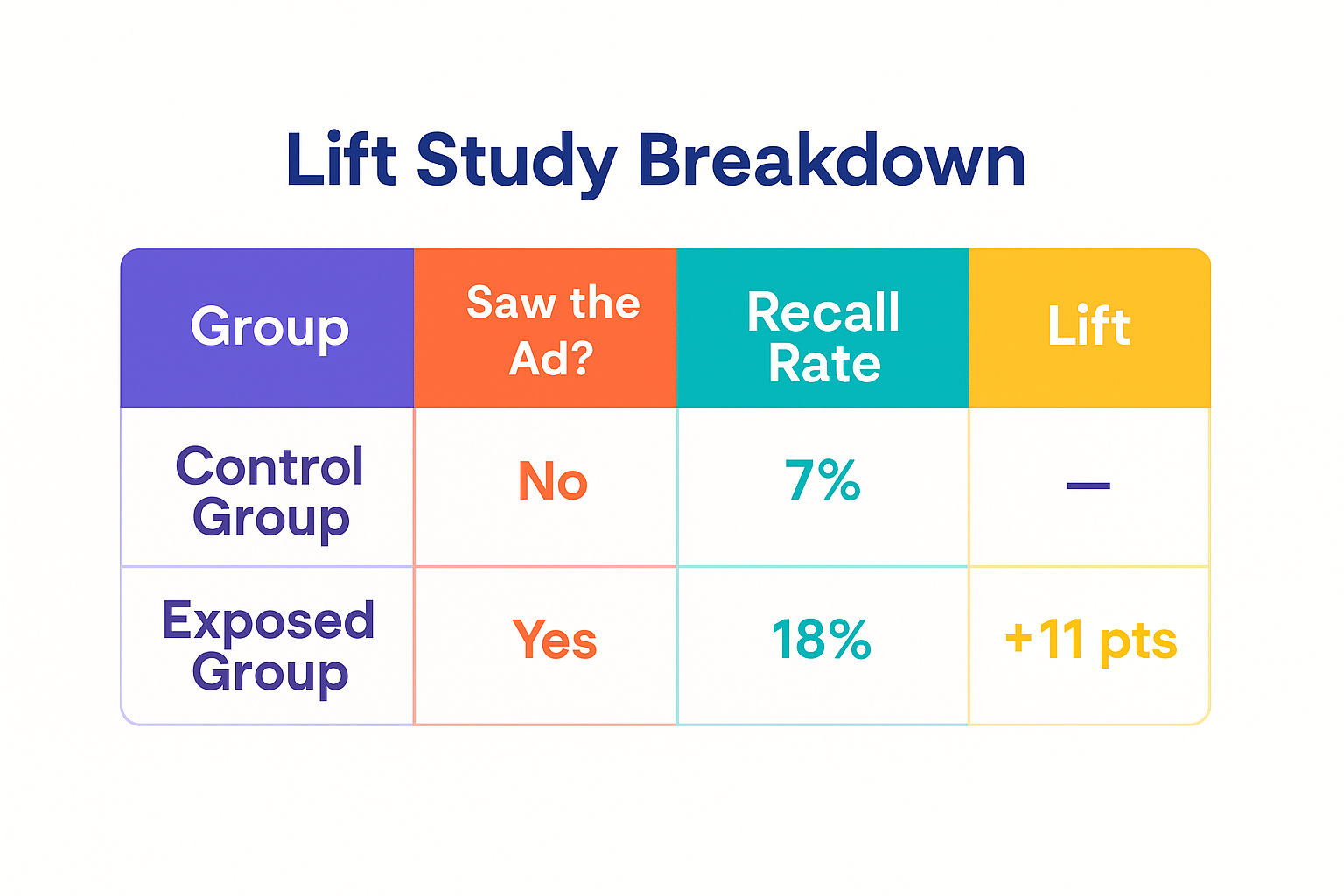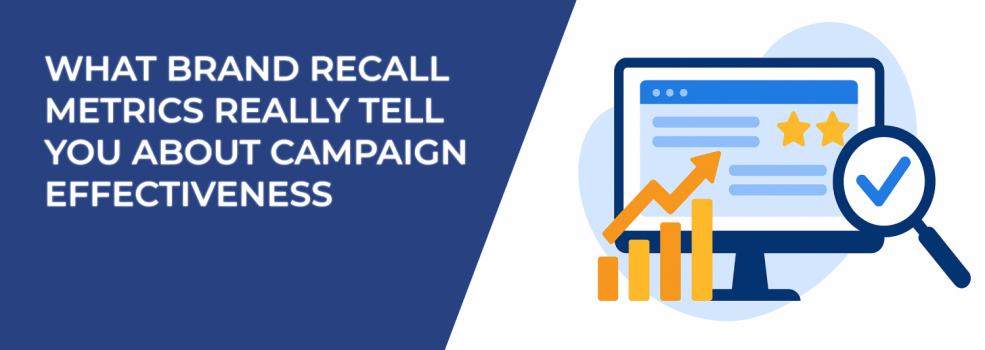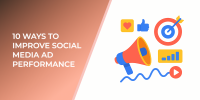Do people actually remember your brand — or just the discount you offered last week?
That’s the question brand recall metrics aim to answer. They’re not just vanity numbers for big-budget awareness campaigns. When used right, they help you understand whether your message sticks — and if you’re building something more than just clicks and views.
But here’s the thing: brand recall numbers can be misleading. And sometimes, marketers read too much into them without understanding why those numbers matter — or what they really mean for business results.
Let’s unpack what brand recall metrics actually reveal, how to track them properly, and when to trust them (and when to be skeptical).
What Is Brand Recall?
Brand recall is a type of memory test. It measures how many people can remember your brand — unaided — after seeing your ads. It’s not about recognition (where they’re shown a logo and asked if it looks familiar). It’s about unaided memory: "Can you name a brand you saw advertised yesterday?"

Brand recall was 11 points higher in the group that saw the ad.
When people can remember your brand without prompts, it means your message broke through the noise. That’s a major win in a crowded feed.
Here’s a full guide to how Facebook tracks brand awareness through its campaign objectives.
Why Brand Recall Matters — But Isn’t Everything
High brand recall doesn’t always translate to sales. That’s the uncomfortable truth. But that doesn’t mean it’s useless.
Think of brand recall as the first layer in the funnel. It tells you:
-
If your creative is memorable
Did the visuals, copy, or hook stand out enough to make people remember? -
If your messaging is consistent
Are you repeating a clear idea across channels and formats? -
If your media placement is working
Are people seeing your ad often enough (but not too often) to retain the message?
It’s a signal — not a goal. To connect recall to results, marketers should pair it with metrics like branded search volume, CTR, engagement rate, and post-click behavior.
You can have high recall but low conversions, especially if you’re attracting the wrong audience. That’s why it’s important to define your target persona upfront — this step-by-step guide can help.
How Is Brand Recall Measured?
You’ve probably seen it done through Meta’s Brand Lift Study or YouTube’s Brand Lift Surveys. These typically ask:
“Which of the following brands have you seen advertised recently?”
They compare answers from a control group (who didn’t see the ad) with those who did. If the exposed group remembers your brand more often, you get a “lift.”
Sounds simple, right? But there are nuances:
-
Sample size and timing
Too small a sample? You might get meaningless results. Survey too soon or too late? Same problem. -
Survey design
Leading questions or brand bias can skew perception. Avoid that. -
Platform context
Was your ad shown during active engagement (like scrolling stories) or passive moments (like autoplay in background)? That changes everything.
So while lift studies can be useful, they should never stand alone.
What Brand Recall Can Reveal (If You Know Where to Look)
Used smartly, recall metrics can answer questions like:
-
Are we breaking through with new audiences?
-
Is our new messaging stronger than the old one?
-
Did this format or creative drive better long-term recognition?
These insights are gold for creative strategy, especially if you’re running awareness and engagement campaigns simultaneously. For example, if your recall is climbing but your ad set status says "may get zero," that’s a delivery issue — not a creative one. Here’s how to fix it.
Pro tip: track delta in brand recall — the difference between test and control — not just the raw number. The gap is what matters.
Also, compare your recall lift with your branded search volume or direct traffic. If both are trending up together, chances are your awareness campaigns are actually doing their job.
Red Flags: When Brand Recall Might Mislead You
Let’s be honest — not all recall is good recall.
 Higher recall doesn’t always equal higher conversions — action matters.
Higher recall doesn’t always equal higher conversions — action matters.
-
High recall, low engagement
People remember the ad, not the product. -
Wrong associations
If your brand is remembered for the joke or shock factor but not the value, that’s a miss. -
Plateaued recall over time
If brand recall doesn't rise with added spend or new formats, you're likely repeating the same message to the same people too often.
Brand recall is only helpful when it's paired with action or positive sentiment. If you're optimizing for awareness only, you could be missing a chance to nudge conversions in the process.
How to Boost Brand Recall (Without Wasting Budget)
If you're running paid campaigns and want to improve recall without blowing through your budget, try these tactics:
-
Consistency over cleverness
Repetition wins. Use consistent taglines, visuals, and brand assets across platforms and placements.That doesn’t mean your ads should all look identical. But your identity and message should carry across every scroll and swipe.
-
Emotional triggers
Humor, nostalgia, tension — these stick with people longer than bland product shots. Emotion increases retention.And with modern tools, it’s easier than ever to test emotional angles. Check out the best AI text and image generators to experiment fast and iterate without draining your creative team.
-
Visual branding early in the ad
Don’t wait 10 seconds to show your logo. Put it in the first frame, even subtly.This is especially critical on platforms like Instagram Reels or TikTok, where users might swipe away in 3 seconds.
-
Targeting frequency sweet spots
More impressions doesn’t always equal better recall. After a certain point, fatigue kicks in.Monitor frequency caps and audience overlap — and review your campaign structure if you’re hitting diminishing returns.
-
Test your creatives in low-cost environments first
Use Stories or Reels ads to test hooks or concepts before scaling.This helps you identify attention-grabbing formats without committing your full awareness budget upfront.
Each of these tactics helps cement your brand into memory — without overextending your ad spend. Think of brand recall like a conversation. The more familiar and consistent you sound, the more likely people are to remember you the next time they scroll. Test early, stay on message, and build memory value over time. That’s how you create impact that lasts beyond the click.
Final Thoughts: Recall Isn’t the Destination — It’s a Signal
Brand recall metrics are powerful, but only when read in context. They help you understand whether your campaigns are breaking through, building mental availability, and making an impression.
But they don’t tell the full story of effectiveness. For that, you need to connect recall with behavior — clicks, conversions, loyalty, and trust.
So the next time you see a brand lift report with a recall spike, ask:
Do they remember us — or did we just shout louder than everyone else?

